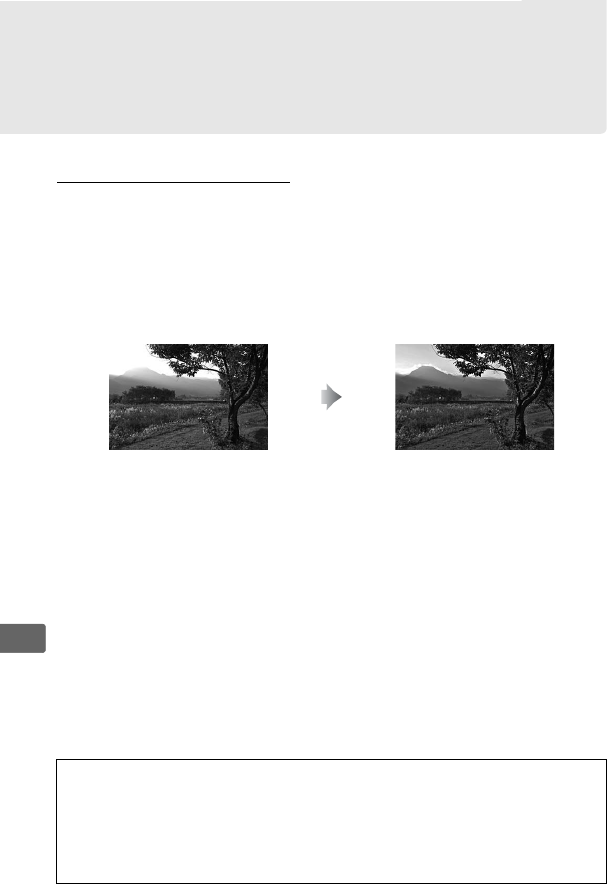Digital Camera User's Manual
Table Of Contents
- Q&A Index
- For Your Safety
- Notices
- Quick Start Guide
- Introduction
- Tutorial
- Live View Photography
- Movie Live View
- Image Recording Options
- Focus
- Release Mode
- ISO Sensitivity
- Exposure
- White Balance
- Image Enhancement
- Flash Photography
- Other Shooting Options
- More About Playback
- Voice Memos
- Connections
- Menu Guide
- The Playback Menu: Managing Images
- The Shooting Menu: Shooting Options
- Custom Settings: Fine-Tuning Camera Settings
- Custom Settings Bank
- a: Autofocus
- b: Metering/Exposure
- c: Timers/AE Lock
- d: Shooting/Display
- e: Bracketing/Flash
- f: Controls
- f1: Multi Selector Center Button
- f2: Multi Selector
- f3: Assign Fn Button
- f4: Assign Preview Button
- f5: Assign Sub-selector
- f6: Assign Sub-selector Center
- f7: Assign Fn Button (Vert.)
- f8: Shutter Spd & Aperture Lock
- f9: Assign BKT Button
- f10: Customize Command Dials
- f11: Release Button to Use Dial
- f12: Slot Empty Release Lock
- f13: Reverse Indicators
- f14: Assign Multi Selector (Vert.)
- f15: Playback Zoom
- f16: Assign Movie Record Button
- g: Movie
- The Setup Menu: Camera Setup
- The Retouch Menu: Creating Retouched Copies
- My Menu/Recent Settings
- Technical Notes

184
J
Preserving Detail in Highlights
and Shadows
Active D-Lighting
Active D-Lighting preserves details in highlights and shadows,
creating photographs with natural contrast.
Use for high contrast
scenes, for example when photographing brightly lit outdoor
scenery through a door or window or taking pictures of shaded
subjects on a sunny day.
It is most effective when used with matrix
metering (0 123).
Active D-Lighting off Active D-Lighting: Y Auto
D “Active D-Lighting” versus “D-Lighting”
The Active D-Lighting option in the shooting menu adjusts exposure
before shooting to optimize the dynamic range, while the D-Lighting
option in the retouch menu optimizes dynamic range in images after
shooting.










